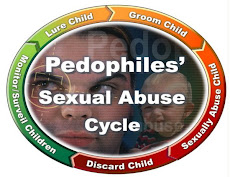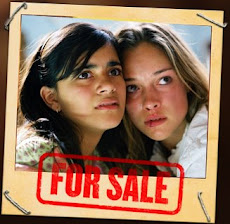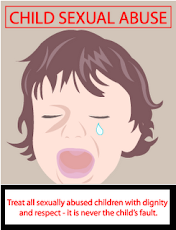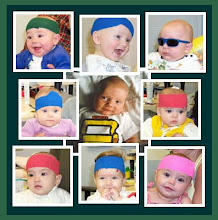THE FACT CHILD SEXUAL ABUSE
.
Provided by
DR WIDODO JUDARWANTO
DR WIDODO JUDARWANTO
SAVE INDONESIAN CHILD FROM PEDOPHILIA AND SEX ABUSE
WE SMILE WITH YOU, WORKING TOGETHER SUPPORT ALL OF CHILDREN
Yudhasmara Foundation
JL TAMAN BENDUNGAN ASAHAN 5 JAKARTA PUSAT, JAKARTA INDONESIA 10210
PHONE : (021) 70081995 – 5703646
email : cfc2006@hotmail.com, allergyonline@gmail.com,
http://pedophiliasexabuse.blogspot.com/
WE SMILE WITH YOU, WORKING TOGETHER SUPPORT ALL OF CHILDREN
Yudhasmara Foundation
JL TAMAN BENDUNGAN ASAHAN 5 JAKARTA PUSAT, JAKARTA INDONESIA 10210
PHONE : (021) 70081995 – 5703646
email : cfc2006@hotmail.com, allergyonline@gmail.com,
http://pedophiliasexabuse.blogspot.com/
.
.
The Victim
- Victims of child sexual abuse are found in all classes and ethnocultural communities. Children who have physical or mental disabilities are especially vulnerable to sexual abuse.
- Children are not able to give informed consent to sexual activity because they cannot fully understand adult-child sexual contact or predict the consequences, and because the adult is abusing a position of authority over the child.
- Children who are isolated from others are at greater risk of being sexually abused. These children have little contact with friends, brothers and sisters or adults whom they can trust. Some abusers are able to take advantage of a child who is already isolated. Other abusers manage to isolate the child by manipulating people and situations. As a result of sexual abuse, some children may further isolate themselves because they feel different or afraid of what others will think.
- There is a greater possibility of serious distress to the child if the abuser is a family member, or if the child does not receive support from his or her non-abusive parent. The long-term consequences are also worse if force or the threat of force was used in the commission of the abuse, or if there were many incidents of abuse over a long period.
- As mentioned above, children find it difficult to break the silence. In a child's world, adults control most of the resources and seem to know all the answers. If the abuser threatens the child or someone the child loves, the child may not question the adult's power to carry out the threat.
- Children always want to tell about their abuse so that it can be stopped, but they are often afraid that they will not be believed or protected, or they are afraid of what might happen if they do tell. It is normal for children to delay telling about their abuse for a year or more after it occurs. They may talk about the abuse more readily if another victim discloses abuse by the same offender or if they are asked direct questions about the possibility of abuse.
- Especially in cases of incest, when the abuser is a close family member, children may not reveal their sexual victimization until they become adults. Many never tell even then. The abusers enforce secrecy and create in the child a fear of destroying the privacy and otherwise intact sense of security provided by the family.
- There is little evidence that many children deliberately make false allegations or misinterpret appropriate adult-child contact as sexual abuse. In the few recorded cases in which children appear to have made false allegations, it has usually been the result of manipulation by an adult.
- False denials of sexual abuse (saying it did not happen when it did) and recanting a disclosure of abuse (denying that it happened after having told someone about being abused) are much more common than false reports.
- Children sometimes recant truthful allegations of abuse. This is not surprising because the child naturally fears the impact that a disclosure will have on the family, or fears that he or she will not be believed. As well, the child may recant in fearful recognition of the fact that the offending adult has so much more power.
- When child victims receive professional support prior to giving testimony in court, their statements are more likely to be clear and accurately reflect the time and details of the event. The experience is also less stressful for the child who has received such support.
- Children vary in their responses to sexual abuse. The manner in which the adults react to the child's disclosure is an important factor in influencing how the child comes to view the abuse and his or her own role in it. Being believed and having family support can help the child to cope and adjust and can decrease some of the traumatic effects of sexual abuse.
- Adult women sexually molested as children are more likely than non-victims to suffer from both physical and psychological problems. Abusive and manipulative men may target these women as victims in adult relationships because of their vulnerability. Sexual abuse victims who were also physically or emotionally abused as children are the most likely to suffer from health problems and further abuse as adults.
- Men who were sexually abused as children may also suffer from depression, anxiety and suicidal thoughts and behaviour, especially if they were abused more than once. Those who experienced both emotional abuse and multiple acts of sexual abuse are the most likely to have poor mental health and to report sexual interest in, or sexual contact with, children.
The Abuser
- Most offenders are not strangers to their victims. In most cases, they are well known to their victims. Approximately 25 percent of offenders are adolescents.
- Most of the reported abusers are male.
- It is the offender who initiates the sexual activity. The offender is responsible for the abuse no matter what the child does.
- A recent Canadian study revealed that more than 40 percent of convicted child molesters were sexually abused as children. They tended to choose victims close to the age at which they were first victimized.
- Offenders use a number of tactics to gain access to children and to ensure their victim's silence. These tactics include the use of threats, physical force, bribery, and other forms of physical and psychological coercion.
- Some offenders have abused more than 70 children before any of the victims disclosed the abuse. In cases in which one offender has abused a large number of victims, the abused children are more likely to be male.
- Incest offenders reflect the same range of education, religion, occupation, intelligence and mental health status as can be found in a representative cross-section of the general population. Abusers are found among all ages, ethnocultural communities and social classes.
- Most sexual abuse takes place in the context of an ongoing relationship between the abuser and the child. This long-term relationship gives the offender opportunity to exploit the child's desires and fears. An incestuous father, for example, may give his child special privileges or gifts to obtain his or her cooperation and silence.
.jpg)









.png)

Tidak ada komentar:
Posting Komentar